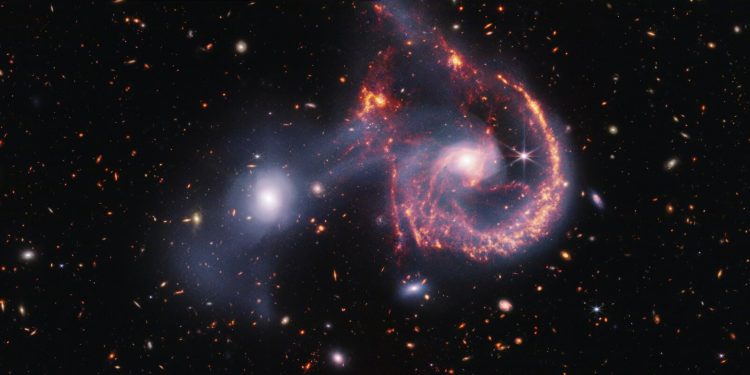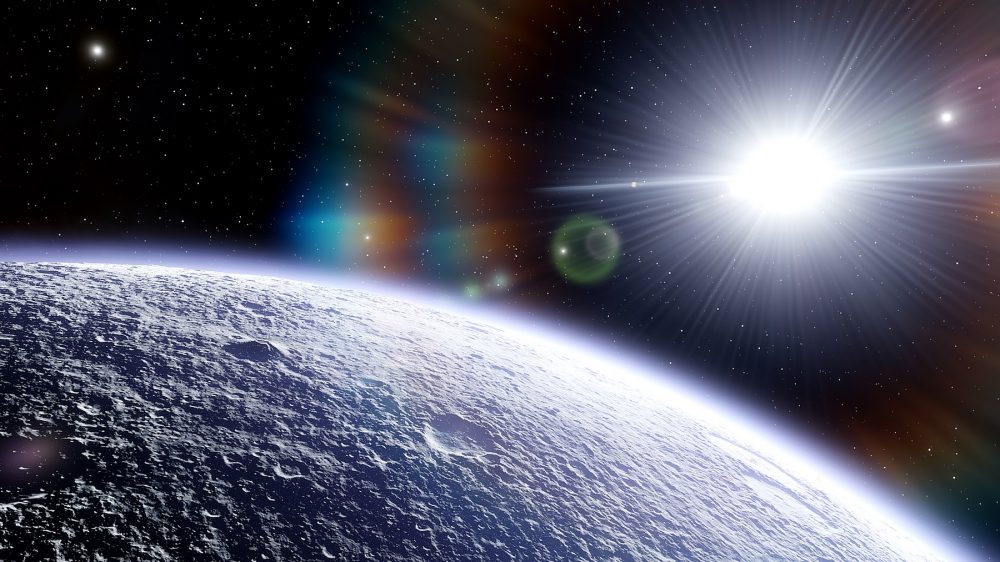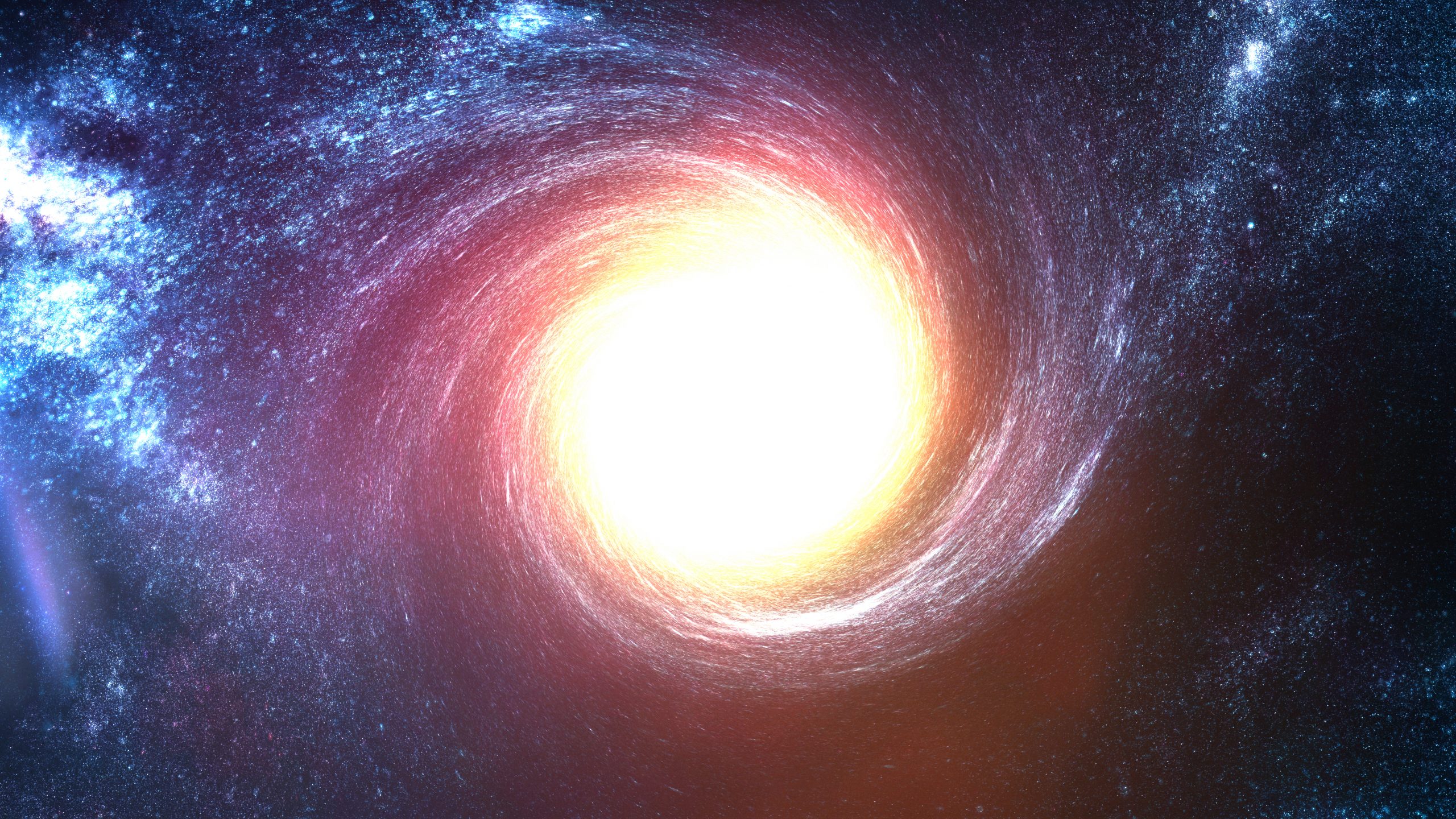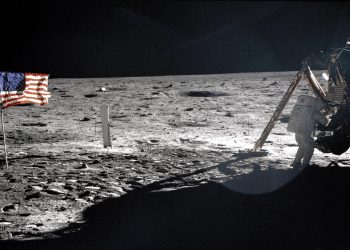The James Webb Space Telescope has once again provided an incredible window into the universe, this time capturing the interaction between two galaxies, known collectively as Arp 107. This galactic pair, consisting of an elliptical galaxy and a spiral galaxy, appears to have transformed into a cosmic smile, with two bright “eyes” and a wide, sweeping arc reminiscent of a grin. While this region was first studied in 2005 by NASA’s Spitzer Space Telescope, Webb’s latest image delivers unprecedented clarity and detail.
The stunning composite image is a blend of data from Webb’s Mid-Infrared Instrument (MIRI) and Near-Infrared Camera (NIRCam). The NIRCam highlights the stars within both galaxies, revealing a fascinating bridge of gas and stars stretching between them. This connection is the result of gravitational forces at play as the two galaxies pass by each other, pulling material from both into a cosmic tether. Meanwhile, MIRI, rendered in orange-red hues, showcases regions rich in star formation and dust, primarily made up of polycyclic aromatic hydrocarbons—organic molecules similar to soot. Additionally, it reveals the luminous core of the spiral galaxy, where a supermassive black hole resides.
Seyfert Galaxies: A Window Into Galactic Phenomena
The spiral galaxy in Arp 107 is classified as a Seyfert galaxy, a type of active galaxy known for its bright core. Seyferts are part of the same family as quasars but are significantly closer and less luminous, making them ideal targets for studying high-energy cosmic events. Webb’s ability to peer into these galactic cores offers scientists invaluable insights into the dynamics of supermassive black holes and the surrounding regions of intense star formation.
This galactic pair bears a striking resemblance to the famous Cartwheel Galaxy, another galaxy interaction that Webb previously observed. However, the smaller elliptical galaxy in Arp 107 seems to have collided off-center with its spiral companion, sparing the spiral from the more dramatic reconfiguration seen in the Cartwheel’s iconic ring formation. Instead, the spiral arms of the galaxy have been disrupted, but its overall structure remains largely intact.
The Science Behind Galactic Collisions
While a collision between galaxies might sound catastrophic, it often sets the stage for new stellar creation. As the galaxies collide, gas clouds within them compress, forming dense pockets where stars are born. However, Webb’s observations reveal a more complex story. Along with star formation, the collision has also dispersed large amounts of gas, possibly depriving future stars of the material they need to form. The delicate balance between these opposing forces—compression and dispersion—plays a crucial role in determining the future of these merging galaxies.
The entire merging process, which Webb has captured in progress, will unfold over hundreds of millions of years. By the time the galaxies fully coalesce, Arp 107’s smile may fade, but it will likely transform into a new, fascinating structure for astronomers to study.
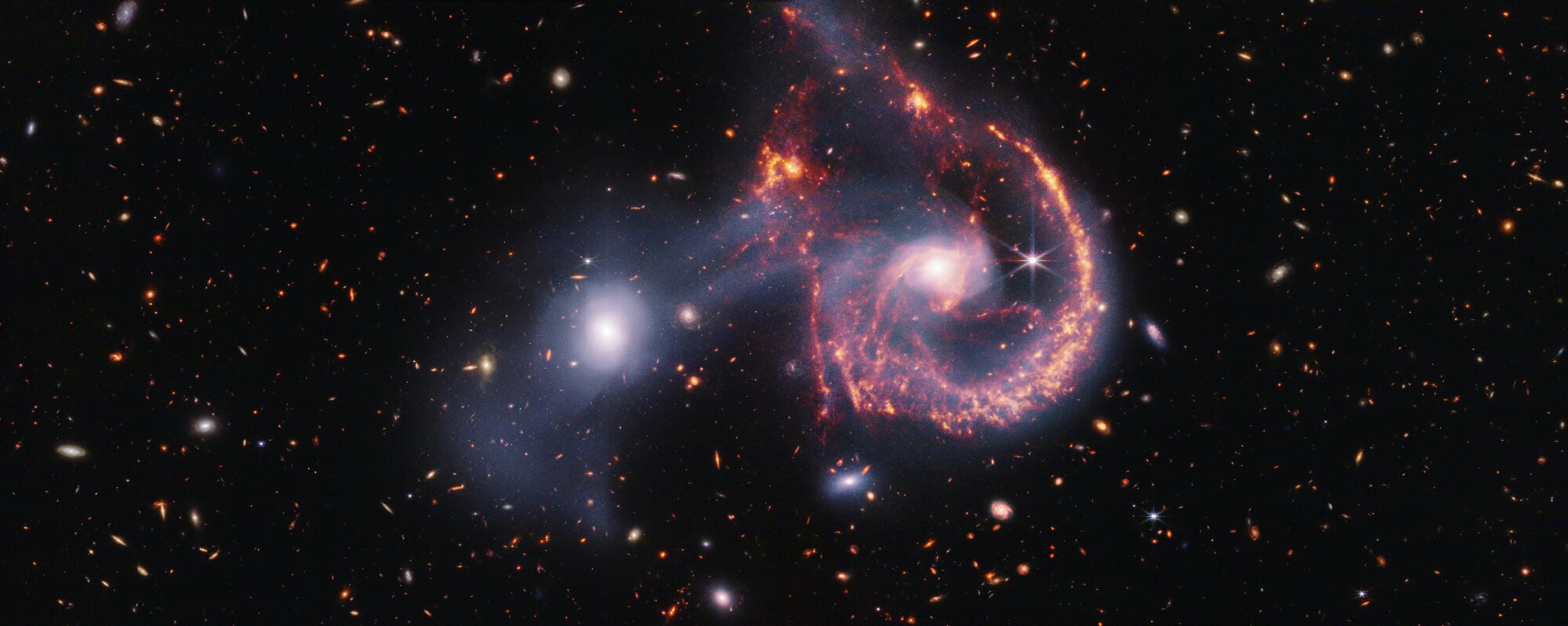
Looking to the Future of Galactic Studies
Arp 107 is located approximately 465 million light-years from Earth in the constellation Leo Minor. This galactic duo serves as a reminder of the vast timescales involved in cosmic evolution. While the galaxies continue their slow dance, Webb’s detailed observations help scientists understand the fundamental processes that shape galaxies, stars, and the universe itself.
What might the future hold for Arp 107 and other interacting galaxies? As Webb continues to observe similar collisions across the cosmos, it opens the door to new discoveries about how galaxies evolve over time. Could studying these interactions unlock more secrets about the early universe, or help us better understand the fate of our own Milky Way as it prepares for a future collision with the Andromeda galaxy?
What do you think? Could Webb’s observations of galactic collisions reshape our understanding of star formation and cosmic evolution?



